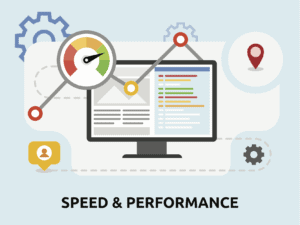Search engine optimisation (SEO) is a common marketing strategy that promotes a business’s rank in search engine results. Without SEO, it can be challenging for small businesses to rank on that sought-after first page. When you’re searching on Google, how many pages do you look at before clicking on one? More than 75% of people won’t scroll past the first page of google search results. This highlights why competitors fight for positions on the first page of a Google search result. Consequently, the higher a page ranks, the more likely it is to be seen by the correct audience. Here are our top five SEO tips that your business needs to know:
1. Target your SEO Content Toward People, Not Machines
This is first on our list because, ultimately, people are your target market and not machines. Yes, it is important for your content to be favoured by search engines as well. However, there won’t be any point in that if there is no audience eager to engage with what you have to offer. Hence, it is important to write blogs about topics that your audience is interested in and asking questions about. Your website will naturally see an increase in activity and search engines will also recognise this.
Quality Over Quantity
There is more value in quality SEO content than the quantity of content your website might have. It is important to remember that 1-3 extremely well-researched and highly engaging blog posts will be more beneficial to your business, and your audience, than 10 very average posts.
Want to learn more about SEO content and best practices? Learn more about our SEO services.
2. Do Your Keyword Research & Targeting
Keyword research is the process of researching and identifying words and phrases that consumers use to search for a specific result. It is an essential part of optimising your website to rank organically in a search engine. Once the keywords have been identified, they can then be worked into your website copy to help your website rank in Google. These keywords can then be incorporated into the following places on your website:
- Title tags such as headers summarises your pages content.
- Meta descriptions tell searchers what your content is about in the search engine results pages (SERP).
- URLs show search engines how to navigate your website.
- Image alt text shows search engines what your images contain.
3. Optimise Your Website for Local Search Results
Local search SEO is a series of actions and strategies designed to improve your visibility on Google and other search engines. Local SEO tactics are what help businesses surface in Maps or search results when someone types in ‘best coffee in Townsville’ or ‘Coffee near me’. Small businesses can improve their local rankings with Google My Business, as it provides the option to list your business location on Google Maps and local search results. When done correctly, local SEO allows people to find information about your business quickly and easily, putting them one step closer to a transaction.
Want to learn more SEO tips? Get in touch with our team.
4. Make Your Website as Fast as Possible
No one enjoys waiting for a web page to load, especially not a search engine. Even if your content is high quality and has the right information people are looking for, they won’t stick around if they can’t access it nearly instantly. A slow website will lead to a poor user experience and page views will start to drop. Apart from visitors’ frustration, search engines also prioritise websites that load quickly. A few things that can be the cause of your slow site are large image files, text and graphics, or too many/unnecessary plugins. It’s recommended to clean up your site at least monthly to ensure it’s not getting overloaded with large, unimportant files.

Is your website slow? Contact us today to improve your website speed and boost your SEO.
5. Ensure your website is mobile friendly
When thinking of mobile friendliness, you should keep in mind these factors:
- Mobile screens are pretty small
- Smartphones typically have slower processors as compared to PCs
- Mobile connections usually have lesser bandwidth and slower load speed
So, not sure where to start?
- Audit your website for mobile-friendliness
Use Google’s mobile-friendly test to see if your website fails or passes the test. - Use mobile SEO best practices
Once you’ve tested your website for mobile friendliness, it is important to fix any errors that arise. This can be done by ensuring your website meets Google mobile friendly criteria, like using readable text, headings and keywords, image sizes and overall layout. - Use SEO tools to improve your ranking in mobile SERPs
Research keywords and rankings to know exactly what content is relevant for your mobile audience. Ensure consistency for both mobile and desktop views of your site.
Want to learn more about SEO tips or our services? Contact us today to get your marketing strategy in place!

